#pseudois
Explore tagged Tumblr posts
Text

Bharal | John Oates
0 notes
Text

Sichuan bharal Pseudois nayaur szechuanensis
Observed by xrufray, CC BY-NC
29 notes
·
View notes
Text
The Valley of Flowers: A Blossoming Paradise in the Himalayas
Introduction
Nestled high in the Himalayas, the Valley of Flowers is a breathtakingly beautiful national park renowned for its diverse and vibrant flora. Located in the Indian state of Uttarakhand, this UNESCO World Heritage Site offers a spectacular display of wildflowers and is surrounded by majestic peaks. The Valley of Flowers is not just a paradise for nature lovers but also holds significant cultural and spiritual value. This blog delves into the various facets of this enchanting valley, exploring its history, flora and fauna, best times to visit, and tips for travelers.
Historical and Cultural Significance
The Valley of Flowers was introduced to the world by British mountaineer Frank Smythe, who stumbled upon this floral wonderland in 1931 while returning from a successful expedition to Mt. Kamet. Smythe was so captivated by the beauty of the valley that he documented it extensively in his book "The Valley of Flowers." His writings brought global attention to this hidden gem, leading to its recognition as a UNESCO World Heritage Site in 2005.
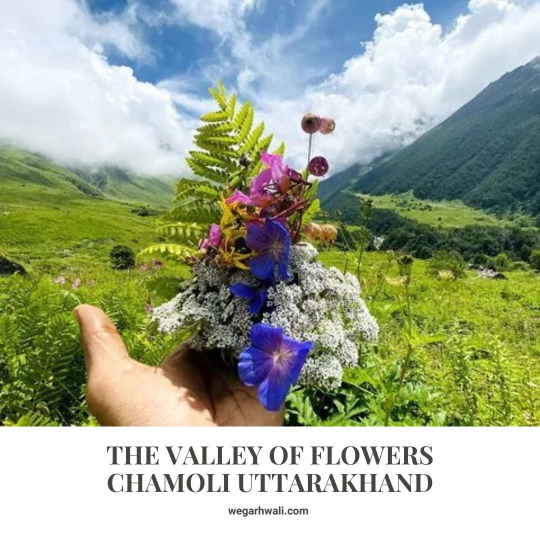
For the local communities, the Valley of Flowers holds deep spiritual significance. The valley is considered the abode of gods and goddesses in Hindu mythology, and it is believed to be the place from where Hanuman, the monkey god, collected the Sanjeevani herb to revive Lakshmana in the epic Ramayana.
Flora: A Kaleidoscope of Colors
The Valley of Flowers is renowned for its unparalleled variety of flora. During the monsoon season, from June to September, the valley transforms into a vibrant tapestry of colors with over 600 species of flowering plants in full bloom. Some of the most notable flowers include:
Blue Poppy (Meconopsis aculeata): The state flower of Uttarakhand, this delicate flower is a rare sight and a highlight of the valley.
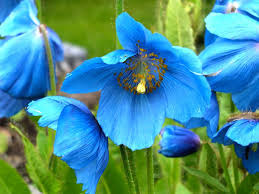
Brahma Kamal (Saussurea obvallata): This sacred flower, associated with Lord Brahma, blooms at night and is considered highly auspicious.
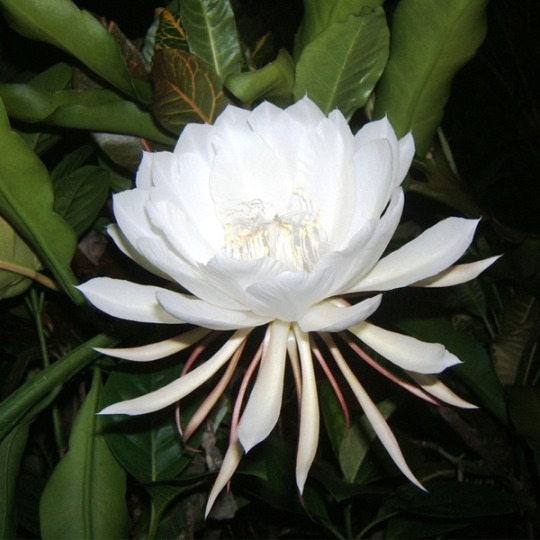
Cobra Lily (Arisaema consanguineum): Known for its unique shape resembling a cobra's hood, this flower adds an exotic touch to the valley.
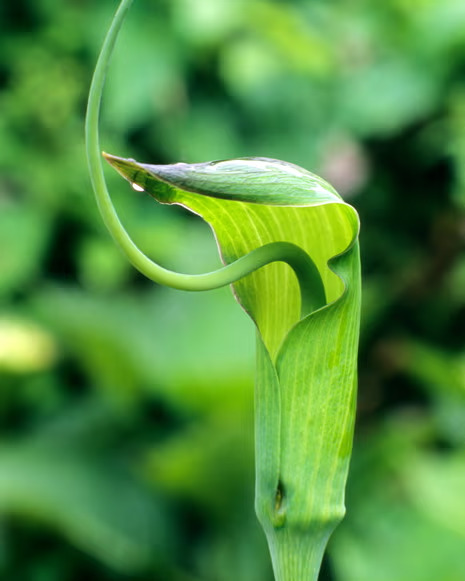
Primula (Primula denticulata): These colorful clusters of flowers are among the first to bloom in the valley.
Orchids and Anemones: Adding to the valley's charm are various species of orchids and anemones, creating a diverse floral mosaic.
The valley's flora also includes several medicinal plants used in traditional Ayurvedic practices, contributing to the local knowledge of herbal remedies.
Fauna: Wildlife in the Valley
While the flora steals the show, the Valley of Flowers is also home to a variety of fauna. The valley provides a habitat for several endangered and rare species. Some of the notable wildlife includes:
Snow Leopard (Panthera uncia): This elusive and endangered big cat is one of the most sought-after sightings in the valley.
Himalayan Black Bear (Ursus thibetanus): These bears are often seen foraging in the valley.
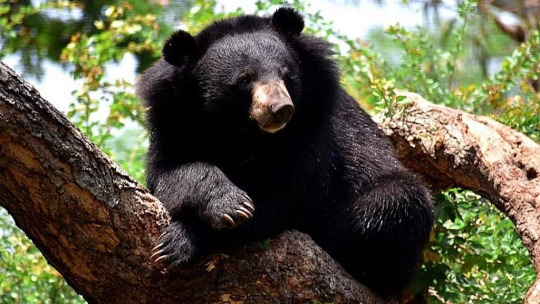
Musk Deer (Moschus chrysogaster): Known for its musk gland, this small deer species is endangered due to poaching.
Blue Sheep (Pseudois nayaur): Also known as bharal, these sheep are commonly seen grazing on the high slopes.
Birds: The valley is a birdwatcher's paradise with species like the Himalayan Monal, Snow Partridge, and various high-altitude raptors.
Best Time to Visit
The best time to visit the Valley of Flowers is during the monsoon season, from mid-July to mid-September. During this period, the valley is in full bloom, offering visitors a mesmerizing spectacle of flowers. The weather is also relatively mild, making it ideal for trekking and exploring the valley.
Trekking to the Valley of Flowers
The journey to the Valley of Flowers is as enchanting as the destination itself. The trek starts from Govindghat, a small town located on the banks of the Alaknanda River. Here is a detailed itinerary for the trek:
Day 1: Govindghat to Ghangaria (14 km)
The trek begins with a gradual ascent from Govindghat to Ghangaria, covering a distance of 14 kilometers. The trail passes through lush green forests, alongside the Pushpawati River, and offers stunning views of the surrounding mountains. Ghangaria, located at an altitude of 3,050 meters, serves as the base camp for the Valley of Flowers and Hemkund Sahib trek.
Day 2: Ghangaria to Valley of Flowers (4 km one way)
From Ghangaria, a 4-kilometer trek leads to the Valley of Flowers. The trail is well-marked and gradually ascends through dense forests, crossing several streams. As you approach the valley, the sight of blooming flowers and the fragrance in the air create an unforgettable experience. Spend the day exploring the valley, capturing its beauty through photographs, and enjoying the serene ambiance.
Day 3: Ghangaria to Hemkund Sahib (6 km one way)
For those with more time and energy, a trek to Hemkund Sahib, a revered Sikh shrine, is highly recommended. The trail to Hemkund Sahib is steeper and more challenging, but the reward is worth the effort. Hemkund Sahib, situated at an altitude of 4,329 meters, is a glacial lake surrounded by seven snow-capped peaks. The pristine lake and the Gurudwara (Sikh temple) offer a serene and spiritual experience.
Day 4: Return to Govindghat
After exploring the Valley of Flowers and Hemkund Sahib, trek back to Govindghat. The return journey offers another opportunity to soak in the beauty of the region and reflect on the magical experiences.
Tips for Travelers
To make the most of your visit to the Valley of Flowers, here are some essential tips:
Acclimatization: The high altitude can pose a challenge for some visitors. Spend a day at Ghangaria to acclimatize before heading to the valley.
Permits: Obtain the necessary permits from the forest department office in Ghangaria. The valley is a protected area, and entry is regulated.
Gear: Pack light but carry essential trekking gear, including sturdy hiking boots, rain gear, warm clothing, and a first aid kit.
Guides: Hiring a local guide can enhance your experience as they can provide valuable insights into the flora, fauna, and history of the valley.
Respect Nature: Follow the principles of Leave No Trace. Do not pluck flowers, litter, or disturb the wildlife.
Weather: Be prepared for sudden weather changes. Carry extra layers and waterproof gear.
Hydration and Nutrition: Carry enough water and energy snacks. There are limited facilities in Ghangaria and none in the valley.
Fitness: Ensure you are physically fit for the trek. Regular cardio and strength training can help prepare for the journey.
Conclusion
The Valley of Flowers is a natural wonder that captivates the hearts of all who visit. Its stunning beauty, rich biodiversity, and spiritual significance make it a must-visit destination for trekkers, botanists, and nature enthusiasts. Whether you are seeking adventure, peace, or a connection with nature, the Valley of Flowers offers an experience that will stay with you forever. So, pack your bags, lace up your boots, and embark on a journey to this floral paradise in the Himalayas.
0 notes
Text
Landscape genetics identified conservation priority areas for blue sheep (Pseudois nayaur) in the Indian Trans-Himalayan Region
http://dlvr.it/SyCltZ
0 notes
Photo

Bharal (Pseudois nayaur)
Photo by Fabrice Stoger
#bharal#pseudois nayaur#pseudois#caprini#caprinae#aegodontia#bovidae#pecora#ruminantia#cetruminantia#artiofabula#artiodactyla#euungulata#scrotifera#laurasiatheria#eutheria#mammalia#tetrapoda#vertebrata#chordata
44 notes
·
View notes
Text
A muskox Ovibos is no more a goat than a mountain goat Oreamnos is. They're both members of the bovid tribe Caprini, which is sometimes referred to as the "goat-antelopes" because it includes the goats, sheep, and antelopes most similar to them. "Antelope" doesn't really have a taxonomic definition -- it basically just means "any bovid that isn't a species of cattle, goat, or sheep" (i.e., the familiar domesticated ones and their immediate wild relatives). Several species universally called antelopes, like kudus and elands, are evolutionarily closer to cattle than they are to other things called antelopes like gazelles and impalas.
If you are using the term "goat" to mean "any caprine" then both muskoxen and mountain goats are goats; this is probably how you end up with the solution "muskoxen are goats". If you are using it to mean "any member of the genus Capra" -- which is by far the most sensible definition for the term, as it includes the domestic goat and its immediate wild relatives -- then neither are goats. You could, hypothetically, use "goat" to mean "any caprine that isn't a sheep Ovis" but that doesn't really make sense because why should goats have preference over sheep? Even trying to restrict goat to mean "caprines phylogenetically closer to Capra than to Ovis" isn't especially useful because you end up with a lot of caprines that can't be called either (Himalayan tahrs Hemitragus, chamois Rupicapra, aoudads AKA Barbary sheep Ammotragus, bharals AKA blue sheep Pseudois, etc.)... and, for the record, all recent phylogenies of which I'm aware place both muskoxen and mountain goats outside the clade formed by Ovis + Capra, and under the definition of "goat" meaning "anything closer to Capra than to Ovis" neither are goats. So basically, there is no arrangement, taxonomic or terminological, to get a situation where mountain goats aren't true goats but muskoxen are.
For what it's worth, some recent phylogenies based on nuclear DNA find that the mountain goat and the muskox are each other's closest relatives, so there is that to think about, too, in terms of terminology... though admittedly this is not recovered in other trees (mitochondrial DNA, whole-genome, morphological, total evidence).
Ultimately, the best definition of "goat" is "member of the genus Capra", and we just have to acknowledge that the mountain goat is so-named because it appears goat-like, but in reality is no more a true goat than it is a sheep... and in fact is more distant from true goats than the true sheep are! The same goes for the muskox, just acknowledging that its name suggests its obvious (and ultimately superficial) similarities to cattle. Casually, using the term "goat" to mean "any caprine" gets the point of these animals' relationships across using a familiar species, but could lead to confusion like this.
I have just learned that Mountain Goats are NOT, in fact, actual Goats.
198K notes
·
View notes
Photo

A bharal, also called the Himalayan blue sheep, at a nature reserve in north-west China
Photograph: Xinhua/Barcroft Images
(via The week in wildlife – in pictures | Environment | The Guardian)
#Bharal#Pseudois nayaur#Pseudois#Caprinae#Bovidae#Artiodactyla#Mammalia#mammal#sheep#mountains#China
22 notes
·
View notes
Photo

5月3日と8日うまれの赤ちゃんがいるそうでした
このとき2ヶ月と10日前後か
@金沢動物園
22 notes
·
View notes
Text
Bharal (Pseudois nayaur) also known as Himalayan blue sheep






#wild animals#photography#nature#adventure#bhutan#travelphotography#wildlifeperfection#wildlifelovers
16 notes
·
View notes
Note
BRUH THE THING WITH CHASE CUTTING PSEUDOI THIRST FOR MOREIT'S SO GOOD
SKDJJSJSS OK PERHAPS I WILL WRITE MORE THEN ?? THANK U SM AWE !! 🥰💨❤️!!
1 note
·
View note
Note
I’m in the northern part of India
A good place for dragons!
Forgive me if my knowledge of northern India is lacking, but as far as I can tell the states in northern India are Haryana, Himachal Pradesh, the Punjab, Rajasthan, Utter Pradesh and Uttarakhand, with the Himalayan mountains on the northern border of India and the Thar desert and associated scrublands towards the west, and the Terai-Duar savanna and grasslands to the north east.
If you are close to the Himalayas, you’ll see the druk (Imperiadraco torridus), specifically the western subspecies (I. torridus nepalus) which has brown-to-golden scales and a mane of green wattles around the head (it is in the longdraconid family, meaning it looks a lot like a stereotypical ‘eastern dragon’). The alpine areas in Himachal Pradesh and Uttarakhand will be good for seeing these animals, as they live at high altitudes, mostly eating sheep and goats such as the bharal (Pseudois nayaur), the tahr (Hemitragus jemlahicus) and a few species of musk deer (Moschus chrysogaster, M. cupreus, M. fuscus and M. leucogaster).
The most famous dragons in India, the nagas (Monoceraserpens indicus) are huge jewel-green serpents with curved, crescent shaped golden nasal horns. You will find the larger specimens in deep rivers (the Ganges being the obvious naga habitat, with rivers associated with the Ganges, the Ganga, Chambal, Betwa, Yamuna, Gomti, Ghaghra, etc.), and smaller specimens may be found in subtropical and tropical forests, such as those in the upper Gangetic plains (Haryana, Rajasthan, Himachal Pradesh, Utter Pradesh, Uttarakhand)
In mythology, they are famed as creatures which can eat elephants (Elephas maximus indicus), and this is especially true for the larger specimens of naga living close to the elephant nature reserves in Uttarakhand and Uttar Pradesh, and as such the conservationists working in these areas try to closely monitor and reduce unruly naga populations. The easiest way to deter the naga is with its natural enemy, the garuda bird, but failing that, a cockatrice (Basiliskos gallimimus) is a good substitute, as the small, chicken-shaped dragons are the unlikely predators of the large nagas.
You will find cockatrices usually in forested areas near farms. They are semi-domesticated animals, in that they will tolerate living among domestic chickens, and may even be handled and housed like a domestic chicken, but they only perform these behaviours so that they can fool the flock, and their prey, into thinking the cockatrice is a mere bird. If possible, they like to wonder around forests with a flock of chickens or similar jungle fowl until a small naga (‘small’ meaning 6ft to 8ft long, the size where they like to hunt in forests rather than stay in the water) attempts to attack the flock for an easy meal. The cockatrice then turns on the naga and sprays a highly venomous toxin, which will blind and injure the animal, and the cockatrice will emit a victory cry to attract other cockatrices, who will then follow the injured naga until death. In countries without a native naga population, the cockatrice makes do with other large animals.
In the mythology of these three animals, the druk is a symbol of good luck and can summon thunderstorms, nagas are holy and beautiful protectors of bodies of water but can sometimes be total jerks (to the point Krishna needed to dance on the naga Kaliya’s head to stop him from being a nuisance) and cockatrices are seen as really deadly monsters (especially in European folklore, these dragons are not mentioned as much in Asian mythology as they are more commonplace animals).
These are the local dragons according to Dracones Mundi, which is a work of fiction based on world mythology plus some ideas from science, hopefully this makes sense!
14 notes
·
View notes
Text

Himalayan bharal Pseudois nayaur nayaur
Observed by fishingcatt, CC BY-NC-SA
28 notes
·
View notes
Photo

The bharal (Pseudois nayaur), also called the Himalayan blue sheep or naur, is a caprid found in the high Himalayas of India, Nepal, Bhutan, Tibet, Myanmar and Pakistan. Its native names include bharal, barhal, bharar and bharut in Hindi, na or sna in Ladakh, nabo in Spitian, naur in Nepali and na or gnao in Bhutan.The ears are small, and the bridge of the nose is dark. The horns are found in both sexes and are ridged on the upper surface. In males, they grow upwards, then turn sideways and curve backward, looking somewhat like an upside-down mustache. They may grow to a length of 80 cm (31 in). In females, the horns are much shorter and straighter, growing up to 20 cm (7.9 in) long.
Photograph: Xinhua/Barcroft Images
41 notes
·
View notes
Text
Gangotri National Park Tour Packages!!
Gangotri park is national park which is situated in Uttarkashi District of Uttarakhand in India. It covering about 2,390 km2 (920 sq mi).Its habitat consists of coniferous forests, alpine meadows and glaciers. Gaumukh at Gangotri glacier, the origin of river Ganga, is located inside the park.The park harbors Western Himalayan subalpine conifer forests at lower elevations and Western Himalayan alpine shrub and meadows at higher elevations. Vegetation consist of chirpine deodar, fir, spruce, oak and rhododendrons.Gangotri National Park is home to the snow leopard. To date, 15 mammal species and 150 bird species have been documented in the park, including Asian black bear (Ursus thibetanus), brown bear (Ursus arctos), musk deer (Moschus chrysogaster), blue sheep (Pseudois nayaur), Himalayan tahr (Hemitragus jemlahicus), Himalayan monal (Lophophorus impejanus), Koklass (Pucrasia macrolopha) and Himalayan snowcock (Tetraogallus himalayensis), pheasants, partridges, doves, and pigeons.In the months from April to October, tourism in the national park is at its peak. The head of railways and airport is Dehradun. The nearest railway station is 210 kilometres while nearest airport is 220 kilometres from the national park. Also Harsil is the nearest town (30 km).
We provides Gangotri National Park, Safari Booking, Tour Packages, Safari Packages with hotel & resort booking service near Gangotri National Park.So All NAtional Park In India is Open now Our wait is over is now for booking you have to just call us or just visit our website.
For booking
Call Us At : +91-7557322322
Visit here: Gangotri National Park Tour Packages
0 notes
Text
Workout Sandbags

All things considered, the exercise blockades stay to be fundamental. Nothing will be more practical for strength mentors than the capacity to lift or convey surprising loads. In the event that you are envisioning to add strength, the exercise barricade will be an incredible method to start. The beneficial thing about these barricades is that they are ideal for a wide scope of exercises. Shopping for exercise blockades may be a tough errand particularly on the off chance that you have never done that. This is on the grounds that there are such countless blockades being offered available to be purchased today. To help you as the purchaser to choose the best exercise barricade, we arranged the gathering underneath. It involves the best exercise blockades from legitimate brands. Prior to continuing further, here is a short guide:
1. Pseudois Workout Sandbags for Fitness
At last on this audit is the Pseudois exercise blockade which will meet your wellness objectives. The primary thing you will like about the reality it has a rock solid development. The nylon texture utilized in its making will ensure that it stays impervious to water. You will comparably like the way that it has quality zippers to ensure that sand doesn't spill. Another helpful component of this blockade is that it has a few holding alternatives. Aside from that, it will be ideal for various sorts of exercise works out.
2. Meister 50lb Fitness Sandbag with Three Removable Kettlebells
On the off chance that you wouldn't fret spending somewhat more money on your barricade, this will be an extraordinary pick. With its quality inward lines, you will value that it turns out to be not difficult to fill the blockade according to you expected weight limit. You need to rush and get one for yourself while stock lasts. Its 8 separate handles offer distinctive exercise hold designs. This will likewise ensure that you have an amazing hold and thus comfort. The quality PVC development material, then again, will ensure that it goes on for quite a while.
3. Carport Fit Workout Sandbags for Exercise
It is safe to say that you are searching for a wellness barricade which will serve you for a very long time conceivable? Look no further since this will be an ideal pick for you. The beneficial thing about this barricade is that it comes in different shading choices. This, subsequently, gives you the confirmation that you will get your favorite. The texture utilized in the development of this barricade, then again, is entirely tough. Other than being solid, it is waterproof which makes it ideal for open air use. An additional helpful element is that it upholds diverse exercise works out. In addition, the blockade is extremely simple to keep up.
4. Meister MMA 50lb Fitness Sandbag
Following up is this knapsack tie which has been made in a helpful plan. It is not difficult to change over the blockade into a backpack which causes you to prepare on conveying loads. The ties highlight a truly agreeable cushioning. This barricade additionally accompanies military-grade catches which will connect and isolate from the D-rings. Furthermore, much the same as other driving blockades, this one also has a customizable weight highlight. You have all the motivations to buy this barricade since it comes at a reasonable cost.
5. PKB PORTABLE KETTLEBELLS – Crossfit, Travel, Home Workout Sandbag
On the fifth situation as indicated by this survey is the PKB barricade. With this blockade, it will be conceivable to alter the preparation. The explanation we say this is on the grounds that the blockade considers simple weight change as per your wellness goals. The beneficial thing about this barricade is that it very well may be loaded up with anything. For example, other than sand, you can utilize soil, water, Lead shot among different materials. You should purchase with certainty since the producer offers an unconditional promise inside 30 days.
0 notes
Video
instagram
The extremely elusive Himalayan Blue Sheep (Pseudois nayaur) in the snow at an altitude of 15,000 feet in Nepal’s little-known Dorpatan Hunting Reserve. These animals are one of the main food sources for Snow Leopards. ~ Despite spending upwards of a week climbing, crawling, and slogging through waist-deep snow in pursuit of the sheep, we were unable to get much closer than these images reveal. ~ Founded to attract international trophy hunters and tourism revenue, Dorpatan is one of the highest hunting areas on the globe. In the mid-nineties, the park was a stronghold for the Maoist rebels who waged a guerrilla war against the Nepal Government for over a decade. During this time, poaching of blue sheep and other exotic species was rampant. ~ Now, a handful of elite hunters travel here each year bringing much-needed employment to the area. The sheep population is now healthy and growing, although local poachers still operate in the more remote reaches of the park using weapons and techniques left over from the ciivl war.
#Himalaya#Mountain#geology#nature#Dorpatan#Reserve#sheep#climbing#travel#landscape#the earth story#video#instagram#national geographic
129 notes
·
View notes